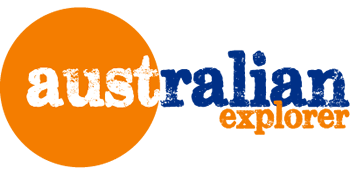Lake Awoonga is located approximately 30 kilometres from Gladstone on the Capricorn Coast and provides terrific free recreation facilities, 365 days of the year.
The lake is a working dam supplying water to the whole region. It has generally been 45 – 55% full all year round.
Surrounded by National Park, it covers a vast area and generally holds over 300,000 mega litres of water but can hold over 700,000 megalitres. If full, it would cover over 6 thousand hectares of surface area.
Lake Awoonga is open for fishing all year around, however, there are some limits between 1st November to 1st February.
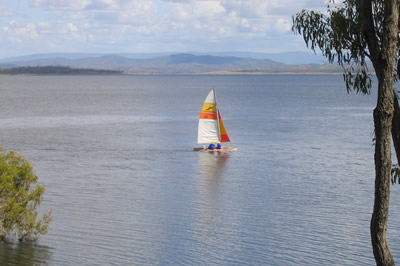 There are many things to do at Lake Awoonga including fishing for barramundi (and other fish) all year round, swimming with family or friends, taking a stroll along one of the landscaped walking trails, exploring the beauty of Lake Awoonga by boat or perhaps sailing, canoeing or even water skiing.
There are many things to do at Lake Awoonga including fishing for barramundi (and other fish) all year round, swimming with family or friends, taking a stroll along one of the landscaped walking trails, exploring the beauty of Lake Awoonga by boat or perhaps sailing, canoeing or even water skiing.
Facilities include landscaped walking trails, scenic lookouts, easy parking, playgrounds for children, picnic and barbecue facilities, disabled parking & toilets, boat ramp and boat hire and the Kalinda Restaurant.
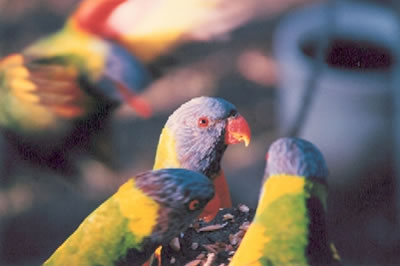 Feathered, furry or scaled, Lake Awoonga is home to a thriving array of native animals, several of which are of conservation significance. Lake Awoonga and the surrounding land provide habitat for a wondrous array of plants, animals and birds. Whip-tailed or pretty-faced wallabies, can be easily found throughout the recreation area.
Feathered, furry or scaled, Lake Awoonga is home to a thriving array of native animals, several of which are of conservation significance. Lake Awoonga and the surrounding land provide habitat for a wondrous array of plants, animals and birds. Whip-tailed or pretty-faced wallabies, can be easily found throughout the recreation area.
You may also encounter skinks, frogs, turtles, platypus, possums, echidnas, butterflies, bats, koalas, geckos, and a multitude of insects and plant life. Two species listed as vulnerable: the yellow-bellied glider and the grey-headed flying fox.
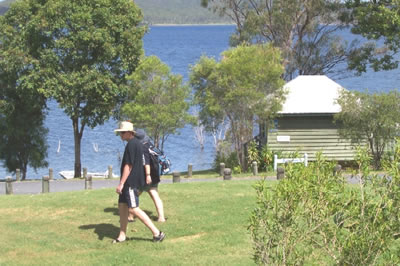 Lake Awoonga is also one of the most important near-coast bird refuges on the East Coast of Australia. Around 25% of Australia's bird species can be found within the region, making Lake Awoonga a fantastic place to view the wonderful wildlife or to enjoy birdwatching. Alternatively just sit back, relax and take in the lovely landscape and sensational scenery!
Lake Awoonga is also one of the most important near-coast bird refuges on the East Coast of Australia. Around 25% of Australia's bird species can be found within the region, making Lake Awoonga a fantastic place to view the wonderful wildlife or to enjoy birdwatching. Alternatively just sit back, relax and take in the lovely landscape and sensational scenery!
You may be lucky enough to spot a jabiru, a whistling kite, a bar-tailed godwit or a whimbrel. The Southern Squatter Pigeon is listed as vulnerable and of conservation significance, and fifteen species are listed on International Migratory Conservation Agreement lists.
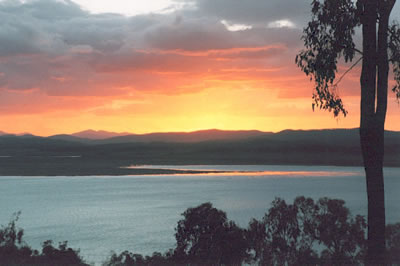 The Gladstone Area Water Board operates a fish hatchery (supported by the Central Queensland Ports Authority) which breeds barramundi, mullet and mangrove jack for release into Lake Awoonga, making it a fishing mecca. Barramundi over 15kg are regularly caught, and the heaviest caught by the end of 2007 weighed in at a hefty 33.3kg! Apparently, there are many larger ones waiting to be caught.
The Gladstone Area Water Board operates a fish hatchery (supported by the Central Queensland Ports Authority) which breeds barramundi, mullet and mangrove jack for release into Lake Awoonga, making it a fishing mecca. Barramundi over 15kg are regularly caught, and the heaviest caught by the end of 2007 weighed in at a hefty 33.3kg! Apparently, there are many larger ones waiting to be caught.
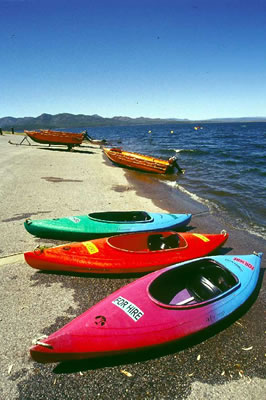 The fish are bred at the purpose-built fish hatchery. The hatchery is one of the largest breeders of barramundi fingerlings in Queensland and the mangrove jack breeding program has resulted in Lake Awoonga holding the largest stocks in Australia with over 13,000 released.
The fish are bred at the purpose-built fish hatchery. The hatchery is one of the largest breeders of barramundi fingerlings in Queensland and the mangrove jack breeding program has resulted in Lake Awoonga holding the largest stocks in Australia with over 13,000 released.
Approximately 300,000 fish are released into Lake Awoonga each year including 200,000 barramundi and 100,000 mullet, and small numbers of mangrove jack. Since 1996 over two and a half million barramundi fingerlings and 340,000 mullet fingerlings have been released into Lake Awoonga.
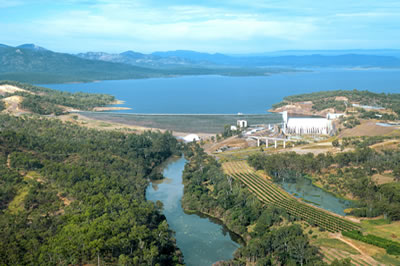 Maps are available from Kalinda Cafe and the Lake Awoonga Caravan Park kiosk. Posters containing comprehensive lists of flora and fauna are also on display in Kalinda Cafe, Lake Awoonga Caravan Park kiosk and also the Boat House.
Maps are available from Kalinda Cafe and the Lake Awoonga Caravan Park kiosk. Posters containing comprehensive lists of flora and fauna are also on display in Kalinda Cafe, Lake Awoonga Caravan Park kiosk and also the Boat House.
When its time to eat you can enjoy a picnic or barbecue or drop into Kalinda Cafe for lunch on the deck and enjoy the glorious views. For accommodation consider hiring a houseboat or staying at the nearby caravan park and camping grounds. Caravans, tent sites and cabins are available at the caravan park and houseboats are also available to hire (privately operated).

